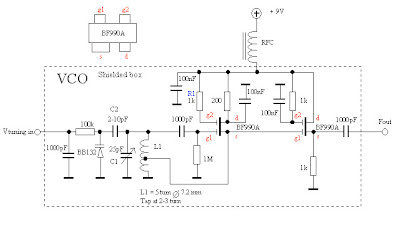In this fast-paced world, there is little time for inconveniences and a greater need for portability and adaptability. The idea for an
stems from this need. There may have been times when you've wanted to hook up your VCR from one room to another television set in another room.
But that would have entailed that you first unhook all kinds of wires and plugs from the primary TV set; carry the VCR to the next TV set; and then finally re-wire everything together. An
Audio/Video transmitter will let you do just about the same thing. But it would offer other conveniences as well. For example, it would allow you to set up
security cameras around your home which would send
video signals directly to a
TV or
VCR. And, there are no cumbersome wires and cables to line throughout the intended area.The most difficult part of this project was coming up with a design that would work. Because both of us had very little experience with
RF signal systems we had to learn, basically, from scratch. The approach we took, was to first create a
video transmitter, then add the audio portion later. This way we could test each component individually and then integrate them later when we knew both parts were working correctly.
We first went to the Grainger Library to research various
transmitters designs and how they were built. Although all the books were very old, we were able to gather some useful information from various sources. Most of the books had only information about sending audio transmission and had very little on
video signal transmissions. Also, some books that had some kind of designs and data for
video tranmission were very outdated.

But we found some interesting standards that help explained what television stations used. This was not too far from what our original intentions were on building two different
types of transmitters. Let us first look at the basic block diagram of what and how
Audio/Video transmission works.
As you can see,
television signals operates as two separate transmissions. One for the video and the other for sound. And just like our project, two different devices are going to be built. As noted before, most of the books we used from Grainger Library were older than us, so all parts used listed (tubes and such) were outdated and not readily available to us. So the search goes on to finding another solution.
Audio/Video Transmitter schematic
There was another design for
video transmission found from the book: The Giant Book of Electronics Projects by The Editors of 73 Magazine (1st ed. 16th printing) Copyright 1982 (page 464).

We didn't build this design since we didn't know some of the undefined values (or at least they were not properly determined and purposely left undefined).
Conclusion (Results):Overall we learned a great deal about
RF signals relative to how much we knew before hand. We recommend taking an
RF signal class such as ECE353 before undertaking any sort of
RF project.
This project can be greatly improved on for those interested in
RF transmission design which most people take for granted when listening to their favorite band on the radio or watching football games on the TV.































